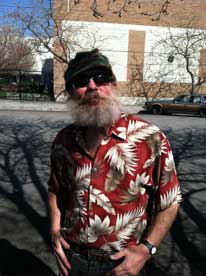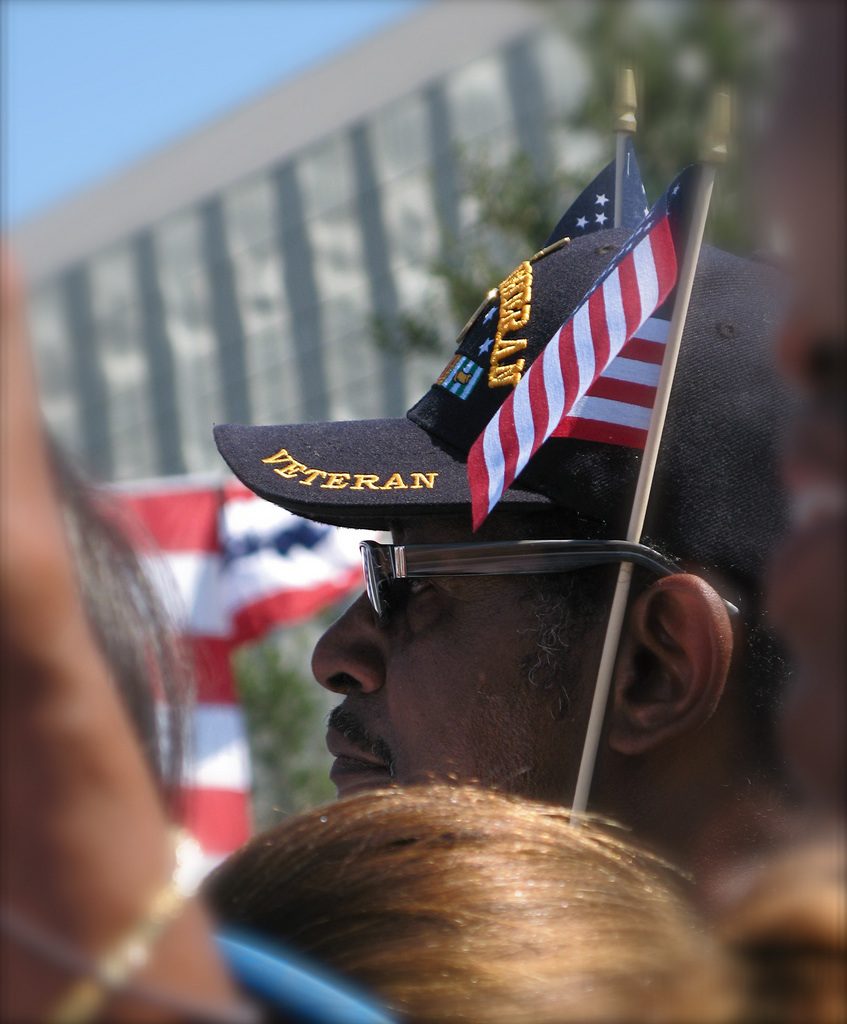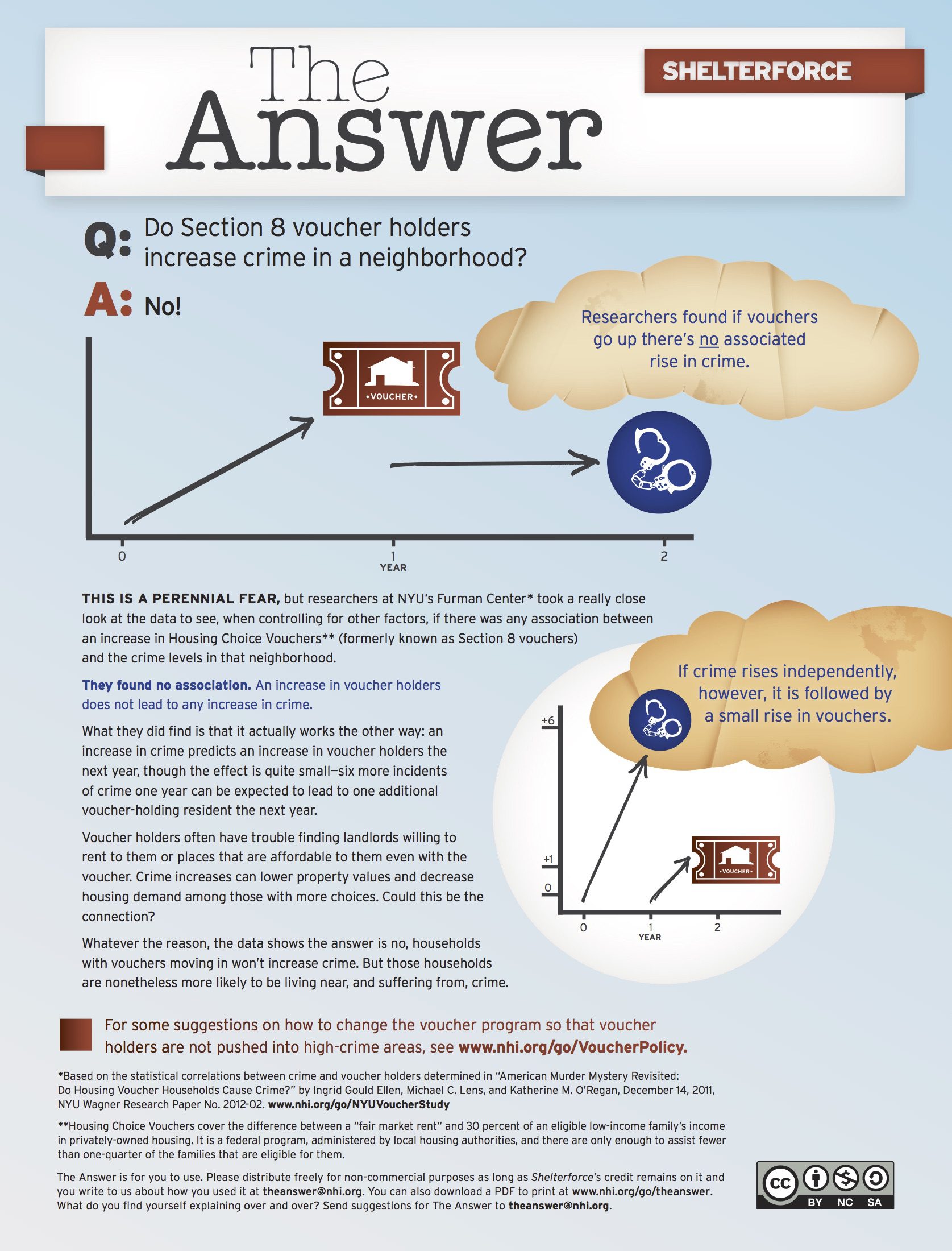
Mark Hudgins, a Navy veteran, was homeless for many years before a collaborative effort helped him get into a supportive housing unit. Photo courtesy of The Road Home
Salt Lake City, Utah, has received a flurry of media attention for the city’s efforts to end homelessness among veterans who have been homeless for a long time. Over the past 24 months, our community has drastically transformed our delivery system in order to create a streamlined approach to housing that has resulted in what many never believed possible.
It is estimated that 6 percent of chronically homeless individuals and 12 percent of all homeless individuals served in the military. This alarming representation led national leaders, including the United States Interagency Council on Homelessness, the Dept. of Housing and Urban Development (HUD), the Dept. of Veterans Affairs (VA), the National League of Cities, and others to join forces in order to help communities figure out ways to end homelessness among this group. These agencies adopted a concentrated approach to systems change that was designed by Community Solutions 100,000 Homes Campaign in partnership with the Rapid Results Institute.
To help communities understand how to implement systems change, this multi-agency, public and private effort held process-improvement, results-oriented boot camps. In October 2012, homeless service providers from Salt Lake County, Utah, attended one of these boot camps in Denver, Colorado. Representatives of the homeless sheltering system, housing authorities, Veterans Affairs, and the Dept. of Workforce Services were present. Over three days, we engaged in a series of exercises that helped us challenge our systems, agencies, and processes. We set goals and agreements as a community. The result was a near-complete overhaul of how we work together to identify, engage, and house the veterans in our community with the most barriers to stable housing, including disability and long histories of homelessness.
Before the Denver boot camp, homeless service providers, which included street outreach teams and shelters, worked very separately from Veterans Affairs despite the fact that the VA had substantial resources to address homelessness. Shelters knew there was a high concentration of veterans living in their facilities and on the streets, but didn’t have clear processes for ensuring those people received VA assistance for housing when appropriate. The VA had a substantial number of HUD-VASH supportive housing vouchers and other opportunities for veterans that were not being used because they had difficulty engaging individuals in shelters.
At the time, an estimated 220 veterans were homeless in Salt Lake County; 100 of them were most likely chronically homeless. Although it made sense to both the homeless system and the VA that the organizations should come together, our philosophies and service delivery mechanisms were drastically different. Before the boot camp we couldn’t fathom how to work cohesively enough to make a significant impact on the population.
During the boot camp, the nine attendees from Salt Lake City identified and eliminated every administrative and systemic barrier we could think of. We challenged each other, our beliefs, and our practices. At the time, Veterans Affairs was not adhering to a Housing First model, in which individuals are placed in housing as quickly as possible, then supported after placement to optimize stability. Homeless service providers had proven that Housing First was the most effective approach to solving homelessness. After one pivotal (and tense) conversation, the VA agreed to utilize 100 percent of HUD-VASH resources for chronically homeless veterans and to follow the Housing First model. They also agreed to relocate their homeless outreach team to The Road Home, the city’s largest homeless shelter.
Housing authorities reduced voucher process time from 90 days to 1 by agreeing to come to the new Veterans Housing Outreach office at The Road Home and by working with HUD to get permission to accept alternative forms of identification, such as a DD-214 (a military Report of Separation that contains information normally needed to verify military service) instead of a state-issued ID and birth certificate.
The Road Home agreed to put all housing resources on the table, including SSVF (Supportive Services for Veteran Families) and mainstream programs such as Shelter Plus Care, transitional housing, and other HUD-funded programs, and to connect its robust housing placement infrastructure to the new process.
In three days, we were able to deconstruct every process and systemic barrier to ensure our resources could be delivered as efficiently as possible. After the boot camp, we enlisted more support from street outreach teams, local government, funding agencies, and anyone else we could get to join in.
Changing Process
None of the process improvements we made were difficult on their own. Other than the shift in philosophy from the VA, we worked on the practical, nuts-and-bolts bottlenecks in our systems. We made a list identifying known homeless veterans in Salt Lake County, how we could determine veteran status and housing eligibility, and where we thought people were staying. We pushed ourselves to rise above our existing structures and habit of identifying why we couldn’t do things, and figure out how to make things happen.
Over the months that followed, our new multi-agency team met together every Thursday at 9 a.m., which was an essential component to our communication and accountability to each other. Additionally, we made the Veterans Housing Team an innovative, exciting entity that the community started paying attention to. Other agencies wanted to join and contribute their resources to this progressive movement. As a growing team, we continued to sort the list of 220 veterans into who was already being processed and who had been housed, and added names of new people we had yet to engage. We even tracked stability of veterans after housing placement.
Homeless street outreach teams worked to find people who were not staying in shelters. Shelter staff made sure to “catch” any veteran checking in for a shelter bed. The VA Homeless Outreach Team put up a billboard in downtown Salt Lake City asking landlords to help us house veterans by accepting them as tenants. When we located a veteran we were looking for, we assessed their background for housing barriers and figured out the most appropriate housing intervention. We then helped the participant find a place and move in as quickly as possible. We triaged every veteran into a housing program that first helped with finding a landlord and unit they wanted to live in, then moved their possessions and a houseful of donated furniture into their new home. In the first six months, our community housed 117 veterans through this process.
Momentum was an essential part of the veterans housing process. This movement was a tough endeavor, and we expected higher performance from staff and partner agencies than ever before. Every time we reached a goal or a milestone, we quickly set a new goal and worked even harder to find vets who were resistant or hard to find. We had to continuously find new landlords and units that were suitable for the program. Over the year and a half that the team has been in existence, there have been times when enthusiasm waned. There was even an occasion when an essential agency decided to pull out of the collaboration, but the other agencies worked swiftly with them and convinced them to stay.
About one year after the Denver boot camp, we experienced an obvious lull in momentum. We had reached the end of the 200 days for which the 100,000 Homes Campaign was measuring our progress, marking the end of our reporting to them. We desperately needed a recharge and asked if we could come to another boot camp. Our community had come so far and team leaders knew we had to continue. The campaign agreed and invited us to the last boot camp of the series, in Philadelphia. We set new goals that were very different from our original goals. Now, accustomed to evolving into a multi-agency collaborative, we felt the sky was the limit and discussed new partnerships and challenges.
Getting to Results
One effective thing that came out of the Philadelphia boot camp was a good-natured rivalry with service providers in Phoenix. Our cities had already taken jabs at each other here and there about who would end chronic homelessness for veterans first. After a conversation between the two cities, 100,000 Homes Campaign staff, and the National League of Cities, we encouraged Salt Lake City mayor Ralph Becker and Phoenix mayor Greg Stanton to enter into a friendly competition. The mayors agreed, and presented together at the National League of Cities in Seattle in November 2013.
This fun rivalry was all in the name of progress, and it helped the service providers maintain a clear and energized focus on the goal of providing a home for chronically homeless veterans in our cities. At the National Conference of Mayors in Washington, D.C., that December, President Barack Obama mentioned that the two mayors had made unprecedented progress in ending chronic homelessness among veterans.
On January 29, 2014, cities across the United States conducted a Point-in-Time (PIT) count to assess the numbers of homeless people in shelters and on the streets. We anticipate having the results of this count shortly, and hope the data will help us know if we are close to our goal or if there are places where we’ve missed our mark. No matter the results, we have work to do. The lines of communication we have developed and the ability to work collectively across systems have changed how we serve. These new mechanisms translate. We’ve developed multi-agency collaborations in a number of areas including housing for individuals who are chronically homeless, families, and individuals with high shelter nights. We have learned to be nimble. We have learned that innovation is key, and that innovation is continuous.
One Vet’s Story
One veteran served through this initiative had been homeless for years. A veteran of the Navy, Mark Hudgins stated that after his military discharge following a head injury sustained in a motorcycle accident, he camped from place to place over several years. When asked why he wasn’t able to connect with his VA benefits in the past, Mark stated, “It’s like my head is broken, I don’t know how to do things sometimes, and I can’t remember things.” I recently visited Mark, who now lives in a permanent supportive housing unit in downtown Salt Lake City. The change in his appearance and his willingness to engage in a conversation was drastic. Mark was visibly proud of his apartment and neighborhood.
Nearly 24 months (to the day!) after the boot camp in Denver, Colorado, our service delivery system has been reenergized, corrected, and focused on ending homelessness for every single veteran in Salt Lake County, Utah. The lessons we have learned have been translated to other housing placement programs including those for families experiencing homelessness and individuals who are chronically homeless. We will continue to remind ourselves that systems need to be flexible and nimble in order to create progress toward our goals of ending homelessness. Over the next year we will focus not only on veterans who are chronically homeless, but every single veteran in our community. After that, we will continue to hone our system in order to address homelessness among veterans and to make that experience as temporary as possible.
Service providers in Salt Lake City know we can end homelessness for all veterans. As long as we maintain focus and energy, we will succeed. If we do not succeed, it is because we have abandoned the lessons we have learned.





Comments